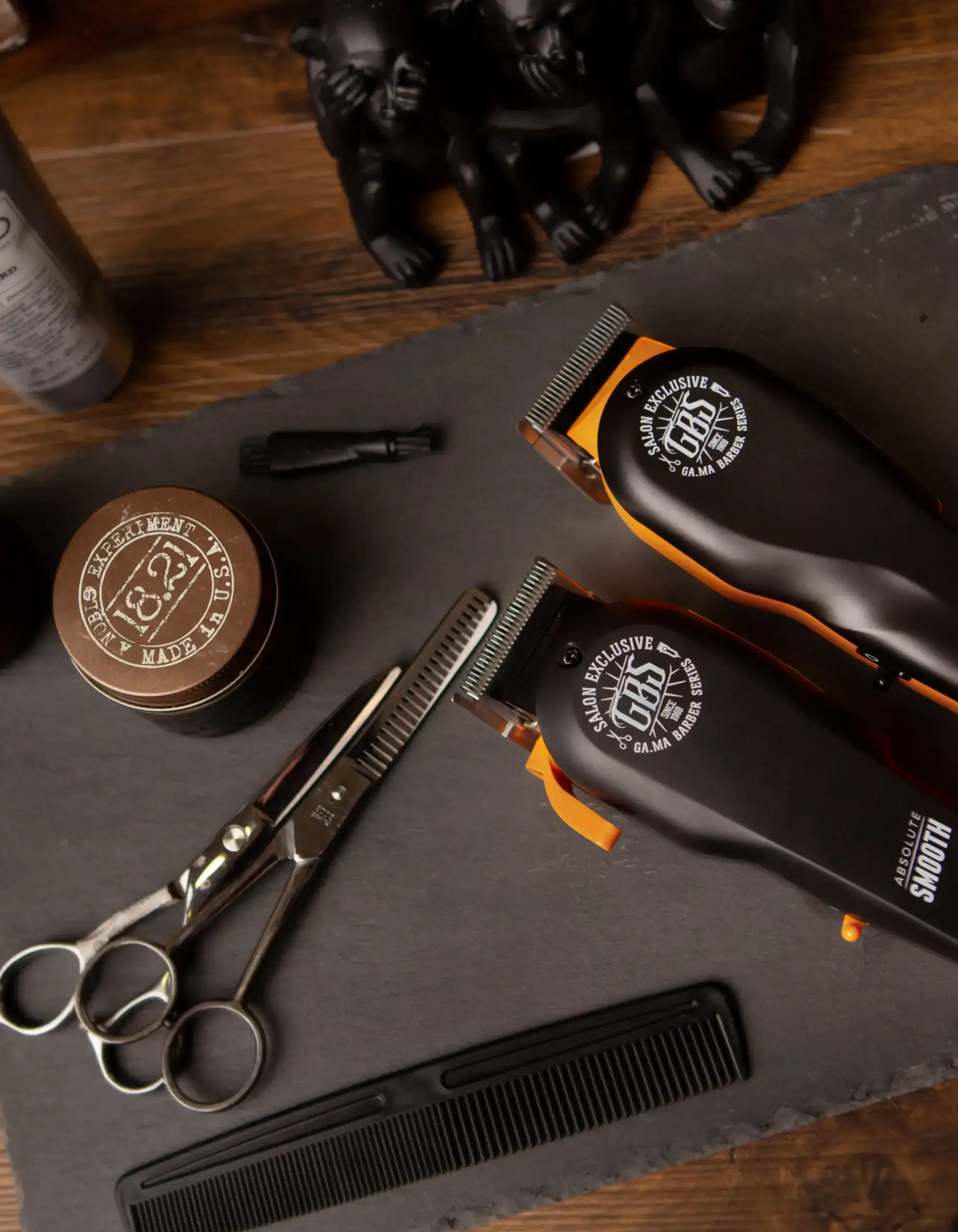Discover a modern layout design for your WordPress site
Are you aiming to enhance your WordPress website with a design that’s both striking and functional? You’re in the right place! This unique two-column layout is ideal for showcasing your services and captivating your audience.
Original design overview
Imagine a dynamic multi-column design, elegantly split into two vertical sections. The left captures a large photograph that embodies your service-think of a bustling barber shop scene that immediately draws attention and creates an inviting atmosphere. Meanwhile, the right side neatly displays a menu, providing a quick overview of the services offered.
Key features and elements
- Overall structure: A sleek, two-part design that balances imagery and text.
- Visual elements:
- Left side: A captivating photograph highlights the barbering experience.
- Right side: A bold header labeled “Our Full Menu” with service listings and prices.
- Typography: Eye-catching headers and readable description text ensure clarity.
- Icons: Subtle graphics like scissors and pomade jars add branding appeal.
Unique design aspects
- Standout choices: Strong visuals combined with a streamlined menu for style and functionality-ideal for drawing in potential customers.
- Responsive design: The layout adapts seamlessly across devices for a consistent, enjoyable user experience.
- Accessibility: With contrasting text on darker backgrounds, readability is enhanced, welcoming a broader audience.
Overall design style
This modern, minimalist design exudes professionalism, perfect for a barber shop or similar service-based business. Effective use of white space not only separates sections but also guides the user’s eye-starting with the striking photograph, then gently nudging them to explore your services.
10 ways to organise content in WordPress
1. Categories and tags
Organising content using categories and tags simplifies navigation for your readers. Categories serve as broad groupings of your content, while tags specify topics within those categories. This classification helps in efficiently managing and retrieving posts, significantly enhancing your site’s structure. For more expert guidance, explore our insights on WordPress navigation menus.
2. Page hierarchy
Creating a logical structure using parent and child pages streamlines content delivery. This hierarchical approach can enhance user experience by providing clear pathways for content exploration. Implementing an organised page setup can also benefit your site’s SEO. For best practices on implementing page structures, review our tips on adding and managing submenus.
3. Custom post types
Custom Post Types cater specialised content needs beyond regular posts and pages, like portfolios or reviews. Tailoring content helps present it more effectively and can offer diverse types of user interaction. It’s a brilliant way to keep your content unique and aligned with your WordPress website design.
4. Media library organisation
Efficient management of your media in WordPress ensures all visual content remains easily accessible and organised. You can sort images and videos into folders, rename files for clarity, and attach tags to create an intuitive library system. Media organisation not only streamlines your workflow but also boosts site efficiency.
5. Use of widgets
Widgets allow for content display across your WordPress website in a cohesive manner. Adding relevant widgets like recent posts, popular items, or interactive elements increases engagement by letting users navigate easily. Consider exploring Elementor Alternatives for more widget options and customisation.
6. Menus and navigation
Strengthen content visibility with strategic menu design. Organising top-level topics and creating clear submenus ensures visitors effortlessly find what they need. Mastering dropdown navigations fosters an engaging and straightforward user journey.
7. Featured content
Highlighting important content through featured sections guides users to the most valuable posts or pages. Implementing prominently placed content using featured tags or sticky posts elevates visibility and draws attention to key topics, enhancing user interaction.
8. Internal linking strategy
Boosting your site’s connectivity through effective internal linking not only aids navigation but also improves SEO. Referencing relevant pages within your posts or articles encourages users to explore more, maintaining engagement and providing additional content value.
9. Excerpts and read more tags
Offer concise content previews with excerpts and ‘read more’ tags. This method maintains a tidy appearance on your main pages while inviting users to delve deeper, ensuring a smooth interaction with your site’s offerings.
10. Archiving by date
Utilise date-based archives to help users and search engines understand your content’s timeline. This chronological arrangement not only enhances organization but also enriches the user experience for those seeking time-specific content.
10 different types of content in WordPress
1. Blog posts
Blog posts are the most common content type on a WordPress site. They allow you to regularly publish fresh content, engage with your audience through comments, and keep users informed about updates, guides, stories, or news relevant to your niche.
2. Pages
Pages are static and timeless elements essential for key site components like ‘About Us’, ‘Contact’, or ‘Services’. They form the backbone of site navigation, ensuring users can access essential information regardless of the site’s evolving content.
3. Portfolios
Portfolios showcase your creative work online, functioning as visual resumes. Ideal for designers and photographers, they present curated selections that highlight expertise and style, gaining the attention of potential clients or employers.
4. Shop products
With the integration of eCommerce plugins like WooCommerce, WordPress allows for seamless sales and management of products. Listings can include detailed descriptions, images, and pricing, providing a comprehensive shopping experience straight from your WordPress site.
5. Testimonials
Testimonials reinforce trust and credibility by displaying client feedback on your website. Highlight positive experiences to persuade potential customers, using this content type as a powerful marketing and reputation tool.
6. Galleries
Galleries efficiently display multiple images in an organised format, ideal for photographers, artists, or anyone looking to provide a visual feast. They enhance engagement through captivating aesthetics and are a great content addition.
7. Video content
Video content is vital, offering dynamic engagement. Embedding videos enhances storytelling and communication. Utilising YouTube or Vimeo increases user interaction and offers diverse content experiences, crucial for modern audience retention.
8. Events
Events provide comprehensive details for upcoming activities, workshops, or meetings. Specialised plugins can handle schedule complexities, allowing users to RSVP or learn more, integrating seamlessly with your site’s ongoing content strategy.
9. Forms
Forms encourage user interaction and data collection, vital for feedback, mailing list sign-ups, or service inquiries. Crafting intuitive forms streamlines communication, supported by plugins enabling easy integration and functionality.
10. Podcasts
Embracing the audio trend, podcasts hosted on WordPress broaden your reach. They allow audiences to engage with fresh content on the go, supported by ease of upload and categorisation, enhancing traditional blogs or standalone audio posts.
Conclusion
Incorporating this modern two-column layout into your WordPress website design can significantly uplift user engagement while presenting your services clearly and attractively. By balancing visual elements with structured information, you foster a compelling online presence that draws and retains customers. Don’t miss the chance to elevate your business-explore how free WordPress themes and the right WordPress website builder can make this design your own today!





